In the realm of artistic craftsmanship, few forms of expression blend utility with aesthetic beauty as seamlessly as stone-carved furniture. Among these, animal benches made from stone stand out not only for their functional purpose but also for the profound artistry they embody. These benches are more than just places to sit; they are sculptural masterpieces that reflect cultural heritage, skilled artisanship, and the timeless allure of natural materials. Each bench tells a story—of the artist’s vision, the animal it represents, and the enduring strength of stone.
Animal benches carved from stone have been present in various civilizations throughout history, often symbolizing power, wisdom, or spiritual connection. Today, they continue to be celebrated as unique works of art that bring life, character, and a sense of wonder into gardens, parks, public spaces, and private residences. The process of creating such benches is an intricate dance between nature and human creativity, requiring immense patience, technical skill, and deep respect for the medium.
This article delves deeply into the world of animal benches made from stone , exploring their historical significance, the meticulous process of their creation, and the symbolic meanings they carry across cultures. Through this journey, we will uncover how these seemingly simple objects can evoke emotion, spark imagination, and become cherished focal points within any space.
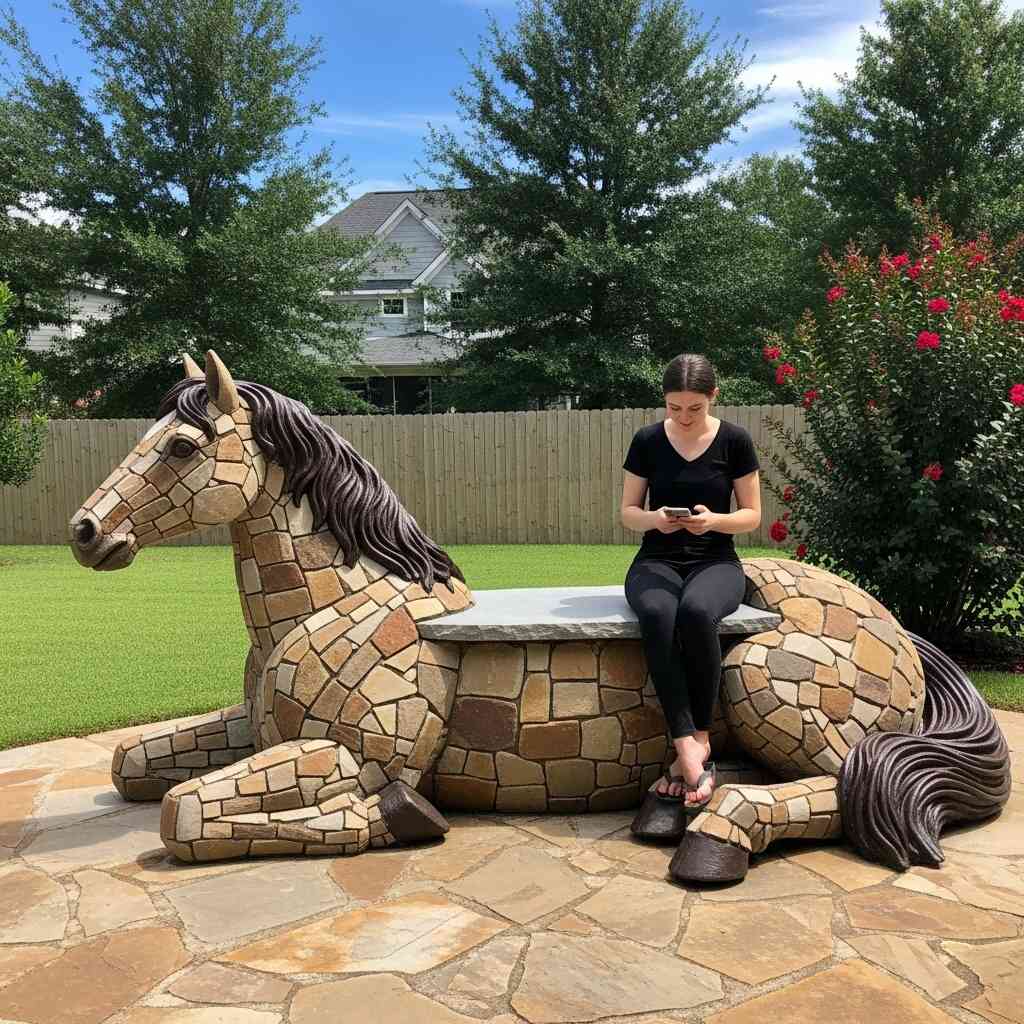
The Historical Roots of Animal Benches in Stonework
Ancient Civilizations and Symbolic Seating
The tradition of crafting benches in the shape of animals dates back thousands of years, rooted in the artistic expressions of ancient cultures. In Egypt, for example, stone was revered not only for its durability but also for its sacredness. Temples and tombs often featured thrones and seats shaped like lions, sphinxes, or falcons—creatures imbued with divine symbolism. These early forms of animal-shaped seating were not merely functional but served as representations of authority, protection, and spiritual guardianship.
Similarly, in ancient China, stone carving reached extraordinary levels of sophistication. Gardens of imperial palaces and temples featured stone benches shaped like turtles, dragons, and phoenixes—each creature representing longevity, power, and rebirth. These pieces were carefully placed within landscapes designed to harmonize with nature, where the interplay between form and environment was as important as the sculptures themselves.
In medieval Europe, stone benches began appearing in cloisters, cathedrals, and monastic gardens. Though less overtly fantastical than their Eastern counterparts, these benches often bore carvings of mythical beasts or domesticated animals, subtly infusing religious and moral symbolism into everyday objects. The tradition continued through the Renaissance, when artists began to explore more naturalistic representations of animals, blending realism with allegorical meaning.
Across continents and centuries, animal benches made from stone have consistently served dual purposes: they offer rest while simultaneously conveying deeper messages about humanity’s relationship with the natural world. This rich historical foundation sets the stage for understanding how contemporary artisans continue to draw inspiration from the past while innovating new ways to interpret these timeless themes.
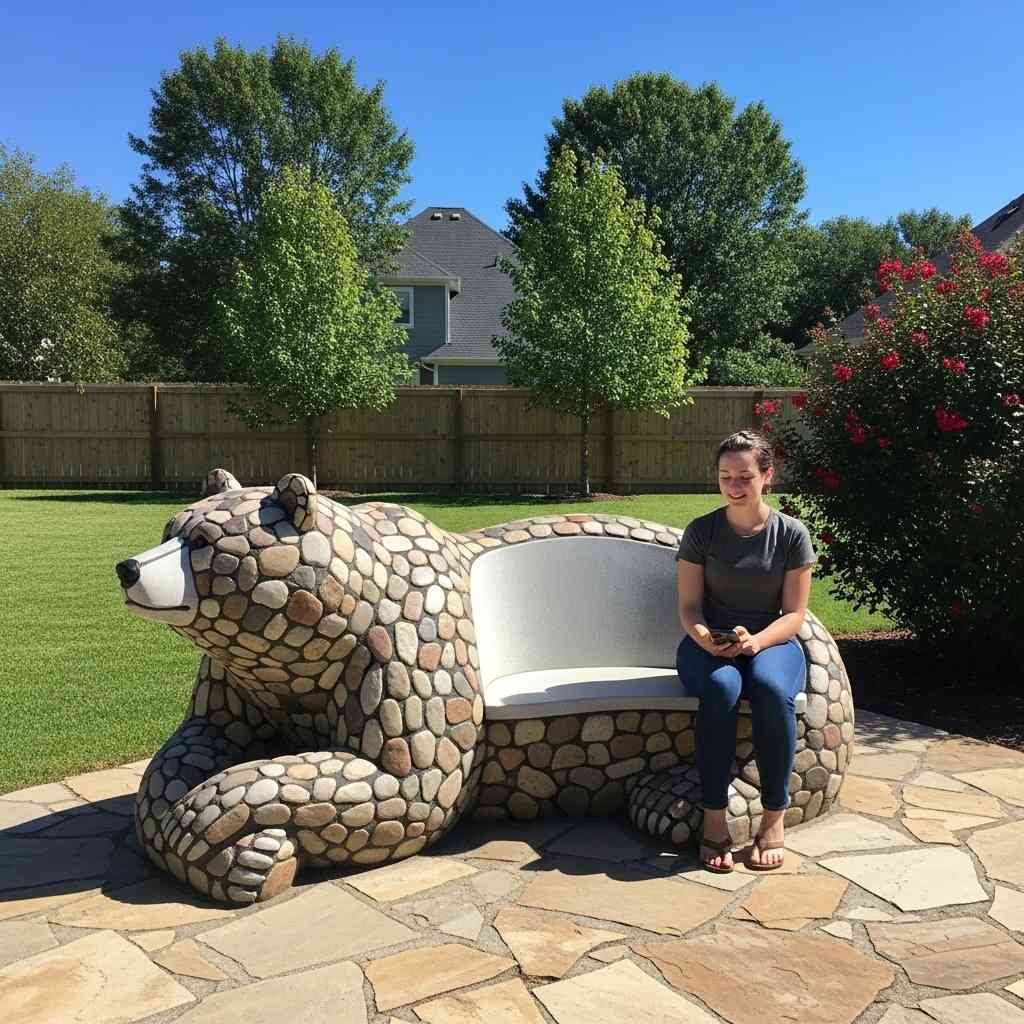
The Craftsmanship Behind Creating Animal Benches
Selecting the Right Stone
Creating a bench that embodies both function and artistry begins with one of the most critical decisions: choosing the right type of stone. The selection is guided by several factors, including the desired level of detail, the environmental conditions where the bench will reside, and the inherent characteristics of the stone itself.
Limestone, sandstone, granite, marble, and basalt are among the most commonly used stones in sculptural bench-making. Limestone, for instance, offers a soft texture that allows for intricate detailing, making it ideal for benches featuring delicate features such as feathers or fur. Granite, on the other hand, is prized for its hardness and durability, ensuring that the bench can withstand the elements without compromising its structural integrity. Marble, though softer than granite, provides a luminous surface that enhances the visual appeal of the finished piece.
Each block of stone carries its own unique grain, coloration, and imperfections, which the artisan must consider during the design phase. Rather than viewing these natural variations as flaws, skilled sculptors see them as opportunities to enhance the individuality of each bench. A vein running through the stone might suggest the curve of an animal’s spine; a subtle shift in hue could highlight the contours of a wing or tail.

The Sculpting Process: From Vision to Reality
Once the stone has been selected, the true artistry begins. The creation of animal benches made from stone is a painstaking process that requires both physical endurance and creative insight. It typically follows several key stages:
- Design and Conceptualization : Before any chisel touches the stone, the artist develops detailed sketches and models. These preliminary designs help visualize how the animal form will integrate with the functionality of a bench. Considerations include balance, ergonomics, and the viewer’s perspective from different angles.
- Rough Shaping : Using tools such as mallets, chisels, and sometimes even modern pneumatic tools, the sculptor begins removing large chunks of stone to establish the basic outline of the animal. This stage demands precision and foresight, as mistakes at this point can be difficult or impossible to correct later.
- Refining Details : As the rough form takes shape, the focus shifts to refining details—carving eyes, claws, scales, or feathers with ever-increasing delicacy. This phase requires a steady hand and an acute awareness of proportion and anatomy. Some artists spend months perfecting a single feature, ensuring that every line contributes to the overall harmony of the piece.
- Surface Finishing : Once the form is complete, the surface is smoothed using abrasives of varying grits. This step can transform a rugged sculpture into something almost lifelike, depending on the desired effect. Some artists leave certain areas intentionally rough to emphasize texture, while others polish the entire surface to a high sheen.
- Final Assembly and Placement : If the bench consists of multiple pieces, they are carefully joined together. The placement of the bench—whether in a garden, courtyard, or indoor setting—is considered in relation to light, surrounding architecture, and the intended emotional impact.
Throughout this process, the sculptor must constantly negotiate between the constraints of the material and the expressive potential of the design. Unlike wood or clay, stone does not yield easily to manipulation. Yet it is precisely this resistance that makes the final result so compelling—a testament to perseverance, vision, and mastery over one of Earth’s most enduring substances.

The Symbolism and Meaning Embedded in Animal Benches
Animals as Cultural Archetypes
One of the most fascinating aspects of animal benches made from stone is the symbolic language they communicate. Animals have long served as archetypes in mythology, folklore, and religious traditions, each carrying distinct meanings across cultures. When immortalized in stone, these creatures take on a permanence that amplifies their symbolic resonance.
For instance, a lion bench may represent courage, leadership, and regality, drawing from the lion’s traditional role as the “king of the beasts.” In contrast, a turtle bench evokes patience, wisdom, and longevity, qualities associated with this slow-moving yet resilient creature. Birds, especially those with wingspans like eagles or owls, often symbolize freedom, knowledge, or transcendence—offering a contemplative presence to anyone who rests upon them.
These symbolic associations are not arbitrary; they emerge from generations of storytelling, spiritual beliefs, and observations of nature. By incorporating these figures into functional art, stone bench makers invite viewers to engage with deeper layers of meaning while enjoying a moment of respite.
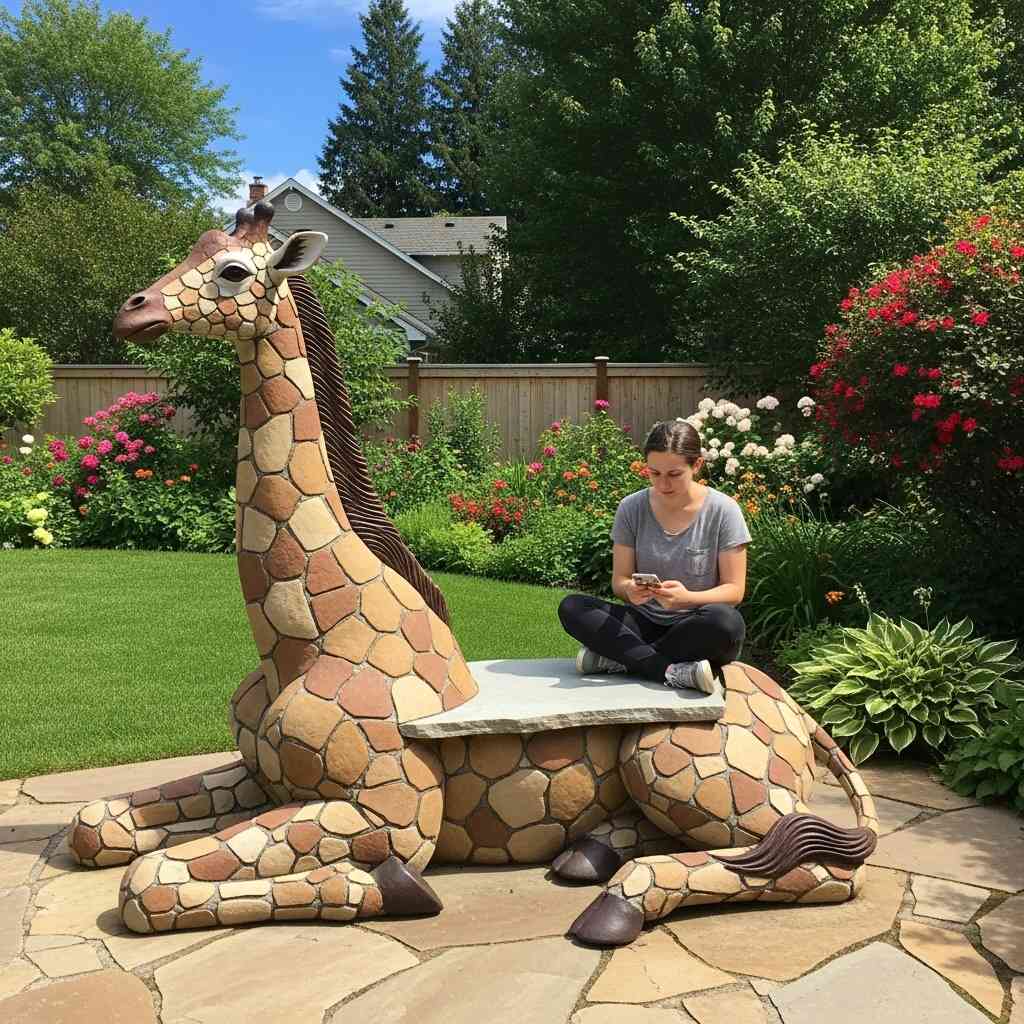
Personal Narratives and Commemoration
Beyond broad cultural symbolism, animal benches often serve as vessels for personal narratives. Individuals commission these pieces to commemorate loved ones, celebrate milestones, or honor beloved pets. A dolphin-shaped bench might be created in memory of someone who loved the sea; a fox bench could symbolize cleverness or adaptability in overcoming life’s challenges.
In public spaces, such benches frequently become gathering points infused with collective memory. A park might feature a bear bench near a forest trail, symbolizing wilderness preservation. A university campus could install a raven bench to honor literary heritage. These installations encourage interaction—not just with the bench itself, but with the stories it invites people to share.
Nature and Human Connection
At their core, animal benches made from stone are meditations on the relationship between humans and the natural world. They remind us that we are not separate from nature but deeply intertwined with it. By placing a representation of an animal in a place meant for reflection or social interaction, these benches foster a sense of kinship with the living beings that share our planet.
Moreover, the use of stone—an element formed over millennia—creates a dialogue between time immemorial and the present moment. Sitting on a stone animal bench becomes an act of grounding, connecting the sitter to both the earth beneath and the stories embedded within the sculpture.
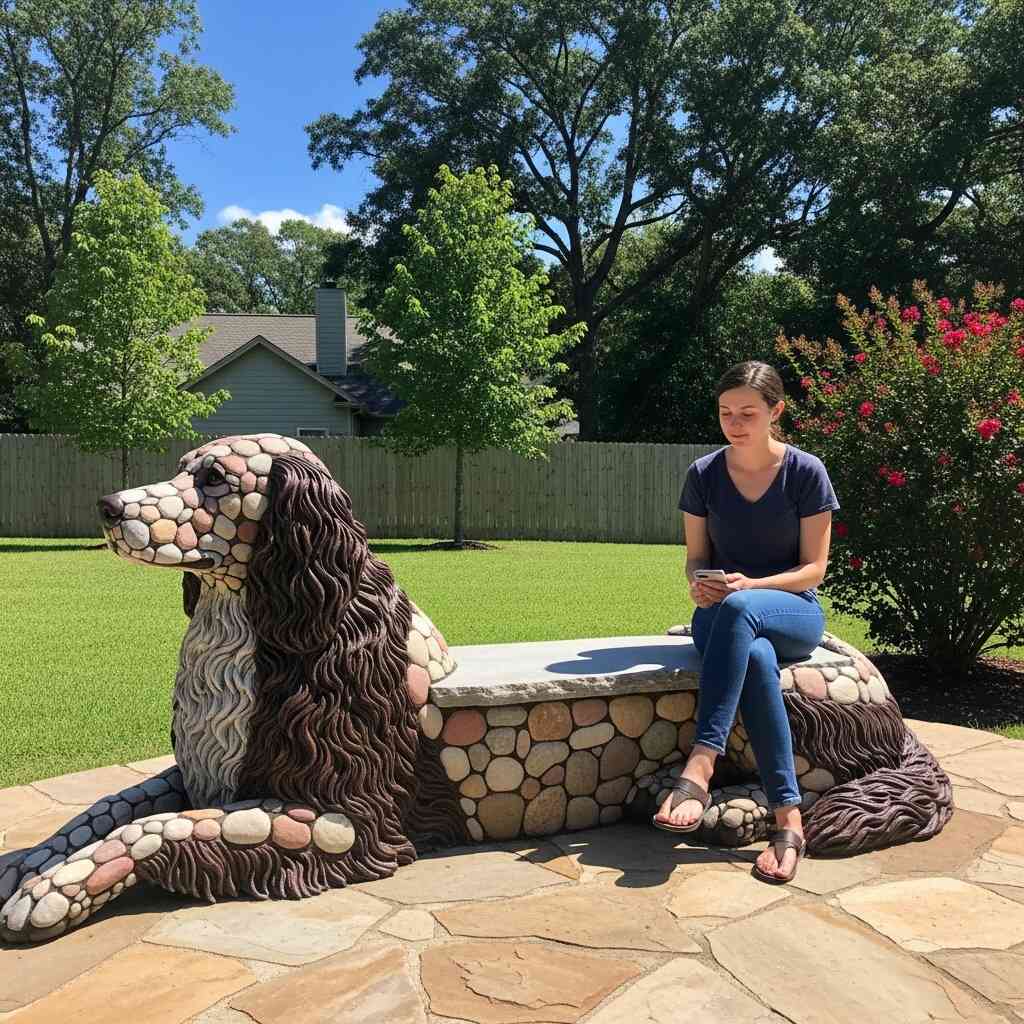
Reviving Tradition: Modern Interpretations of Stone Animal Benches
In recent decades, there has been a renewed interest in handcrafted art forms, particularly those rooted in tradition and nature. Among these, animal benches made from stone have experienced a revival—not merely as decorative garden elements, but as powerful symbols of identity, heritage, and ecological consciousness. Contemporary sculptors, urban planners, and community leaders are increasingly turning to these unique creations not only for their aesthetic appeal but also for their ability to foster connection, storytelling, and environmental stewardship.
Cultural Preservation Through Sculptural Storytelling
Across the globe, artisans are breathing new life into ancient stoneworking traditions by crafting animal benches that reflect local folklore, indigenous beliefs, and regional wildlife. In countries like India, where stone carving has been an integral part of temple architecture for centuries, modern sculptors continue this legacy by creating benches shaped like elephants, peacocks, and tigers—creatures deeply embedded in Hindu mythology and natural heritage.
Similarly, in parts of Africa, stoneworkers incorporate native animals such as lions, leopards, and antelopes into public seating spaces, using these forms to preserve oral histories and ancestral knowledge. These benches often become gathering places where elders share stories with younger generations, reinforcing cultural continuity through tangible art.
This trend is not limited to traditional societies. Even in urban centers across Europe and North America, artists are drawing inspiration from mythological creatures and endangered species alike, transforming public parks and plazas into open-air galleries of symbolic seating. The result is a rich tapestry of cultural expression that transcends language and geography.
Environmental Awareness and Wildlife Conservation
As global concerns about biodiversity loss and climate change intensify, many contemporary creators of animal benches made from stone are aligning their work with environmental advocacy. By immortalizing animals in stone—especially those facing extinction—they offer a poignant reminder of the fragility of the natural world.
For example, benches shaped like polar bears or sea turtles can be found in coastal cities, serving both as resting spots and as subtle calls to action regarding melting ice caps and ocean pollution. In national parks and nature reserves, benches carved in the likeness of local fauna help visitors forge a deeper emotional bond with the landscape and its inhabitants.
These sculptures act as silent educators, prompting questions and encouraging reflection. A child who climbs onto a lion bench might ask why lions are disappearing from the wild; a passerby pausing on a frog bench may wonder about the impact of habitat destruction on amphibian populations. In this way, animal benches made from stone become more than artistic expressions—they serve as catalysts for dialogue and awareness.
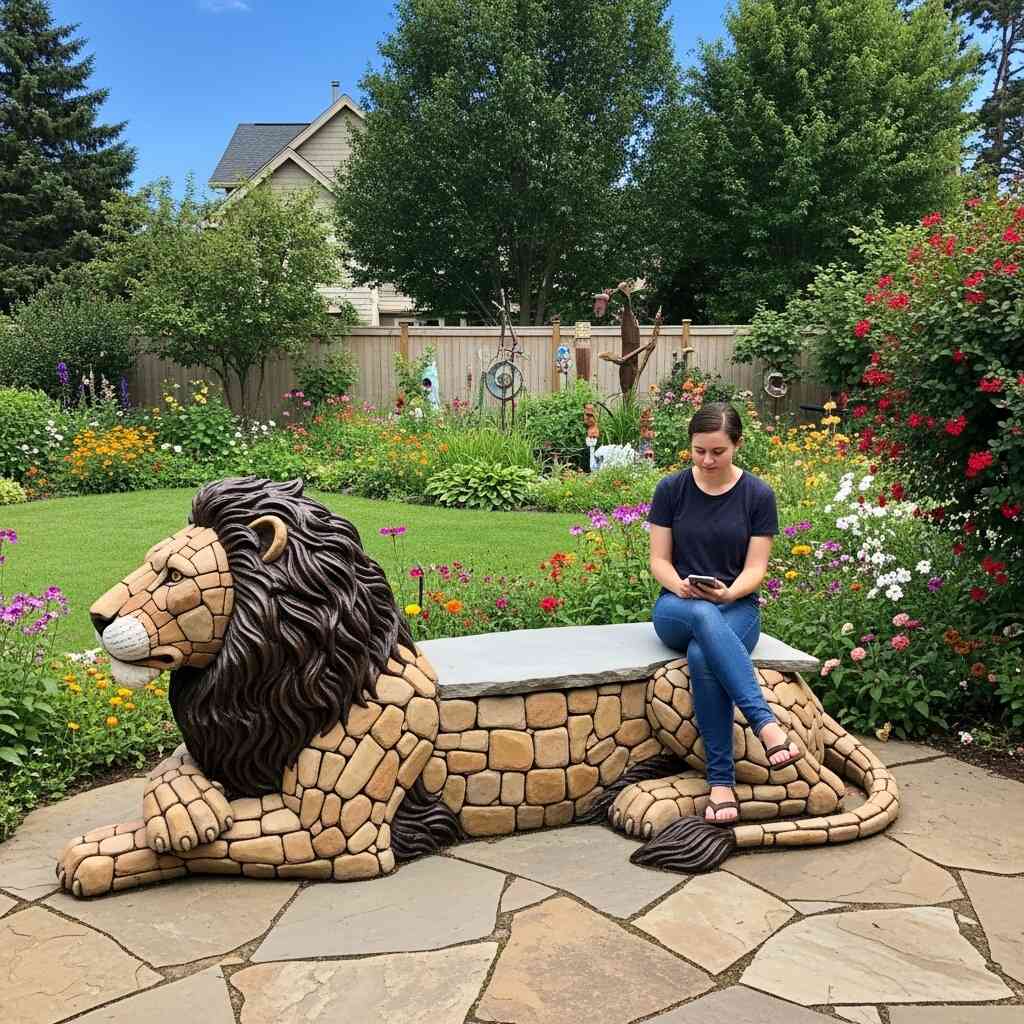
Integration Into Public Spaces and Urban Design
One of the most exciting developments in the world of stone animal benches is their growing presence in urban planning and architectural design. City planners and landscape architects are increasingly recognizing the value of incorporating sculptural elements into communal spaces—not just for beauty, but for functionality and emotional resonance.
Animal-shaped stone benches are now commonly found in city parks, botanical gardens, university campuses, and even hospital courtyards. Their organic forms contrast beautifully with the geometric lines of modern buildings, adding warmth and whimsy to otherwise sterile environments. More importantly, they invite interaction.
Unlike standard park benches, which often go unnoticed, animal-shaped ones draw people in. Children delight in climbing them, couples pose beside them for photographs, and passersby stop to admire their intricate details. In doing so, these benches transform public spaces into places of engagement, curiosity, and joy.
Moreover, because each bench is unique, they contribute to the individuality of a space. A dragon-shaped bench in one neighborhood tells a different story than a wolf-shaped bench in another. This diversity enriches the cultural fabric of cities and towns, making them more memorable and meaningful to residents and visitors alike.
Collaborative Community Projects and Participatory Art
Another emerging trend is the use of animal benches made from stone in community-based art projects. In many regions, local governments and nonprofit organizations sponsor initiatives that bring together artists, students, and volunteers to create custom benches that reflect shared values or commemorate significant events.
These collaborative efforts often involve workshops where participants learn basic stone-carving techniques, guided by master sculptors. Not only does this promote intergenerational learning and skill-sharing, but it also fosters a sense of ownership and pride within the community. When a town collectively creates a bench in the shape of its local mascot or a historically significant animal, it becomes a living monument to unity and creativity.
Such projects are especially impactful in schools and youth programs, where they provide hands-on experiences in art, history, and environmental science. Students involved in these initiatives gain appreciation not only for sculpture as an art form but also for the cultural and ecological significance of the animals they depict.
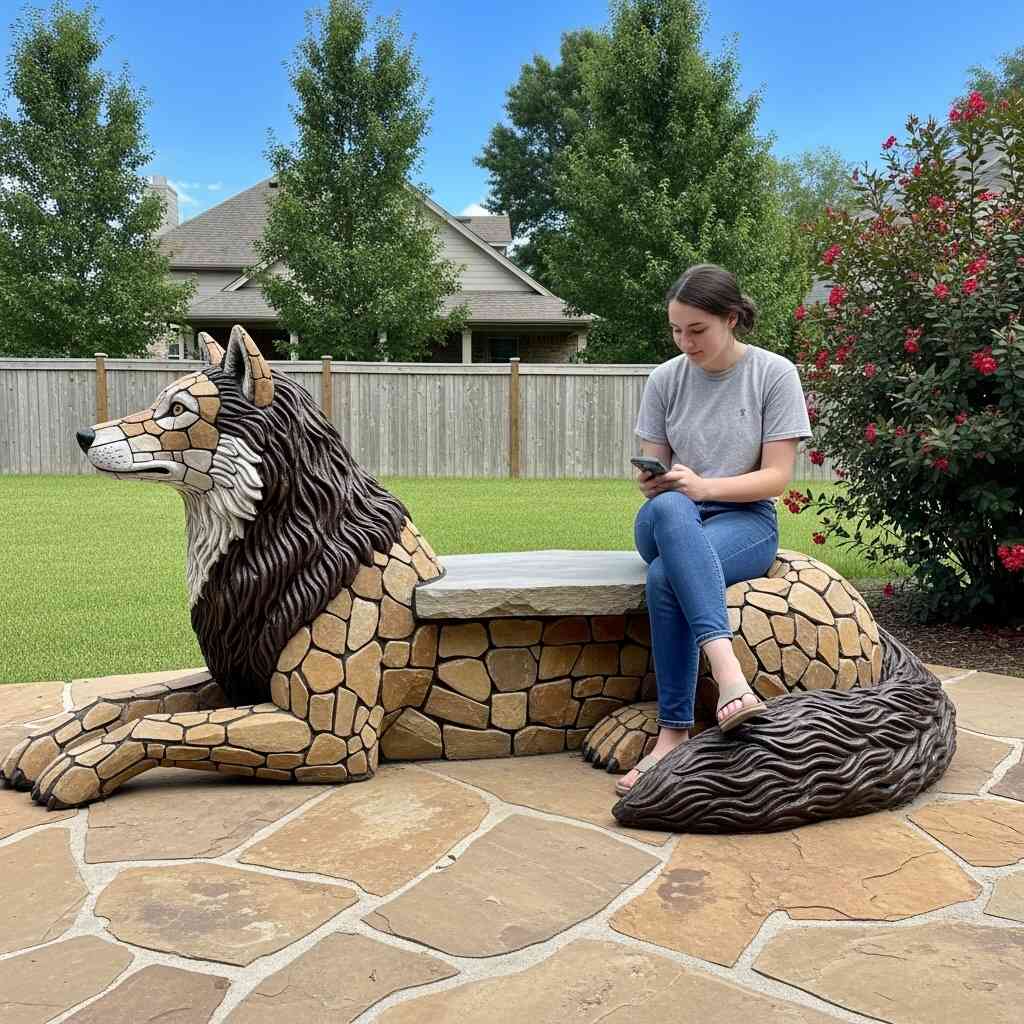
Conclusion: Enduring Legacy of Stone-Carved Animal Benches
As we conclude our exploration of animal benches made from stone , it becomes clear that these creations are far more than decorative outdoor furnishings. They are the culmination of centuries of artistic evolution, technical mastery, and symbolic depth. Each bench is a dialogue between past and present, between human ingenuity and the raw materials of the earth.
The legacy of these benches lies not only in their physical form but in the emotions they stir and the conversations they inspire. Whether nestled in a quiet garden, standing proudly in a public square, or gracing the entrance of a museum, they invite us to pause, reflect, and reconnect—with nature, with culture, and with ourselves.
In a world increasingly dominated by mass production and digital interfaces, the hand-carved stone bench remains a rare and precious artifact of intentional craftsmanship. It reminds us that beauty can be found in the enduring, the tactile, and the meaningful. And perhaps most importantly, it teaches us that even the simplest act—resting upon a stone bench shaped like an animal—can be transformed into a moment of artistry, introspection, and wonder.

